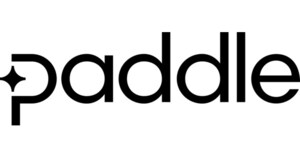New Paddle Report Finds SaaS Growth Slowed in 2021, After a Record 2020
- Covid-19 led to a surge in growth for software-as-a-service (SaaS), but many companies were unable to maintain those growth levels in 2021
- Paddle's Outliers report explores the growth trajectory of SaaS companies globally and highlights the characteristics of 'Outliers', the software companies that continued to thrive despite the slowdown
LONDON, March 10, 2022 /PRNewswire/ -- Software-as-a-service (SaaS) companies saw their revenue growth slow by 46% in 2021 compared to 2020, according to a new study released today by Paddle, the provider of a complete payments infrastructure for SaaS companies. The result of qualitative and quantitative research into SaaS firms from 84 countries, Paddle's Outliers report charts the key factors driving the industry by leveraging data from thousands of companies. The study also highlights the characteristics of 'Outliers', the software companies that continued to thrive through the slowdown.
Thanks to increased demand for software tools as businesses accelerated their digital transformations and shifted to remote working amid the pandemic, SaaS is booming. In 2020, SaaS businesses' revenue grew on average by 78%, and showed no sign of slowing, and as a result, the market is now worth an estimated $145bn - up from $85bn in 2018.
According to the Outliers report, however, revenue growth for SaaS businesses slowed in 2021 with the majority of companies managing only to maintain their newly-increased revenue, rather than building on the previous year's success. Overall, the SaaS companies surveyed recorded an average revenue growth of 32% in 2021, a decline of 46% from the prior year. Moreover, the outlook for 2022 remains uncertain, with only half (51%) of businesses surveyed expecting to hit their ARR targets this year. It's clear that as the impact of the pandemic subsides, software businesses need to change tack to preserve momentum.
Thankfully, Paddle's research has identified the three key growth levers of SaaS businesses that have managed to maintain high growth rates throughout 2020 and 2021, by examining these so-called 'Outlier' firms. These companies remained agile during the pandemic, experimenting with new tools and approaches as well as capitalising on opportunities presented by a remote-first world to pursue global strategies.
The Outliers' growth levers
Dynamic pricing - The fastest growing SaaS firms were those that reconsidered their pricing and experimented with dynamic and usage-based models.
- 40% of companies that regularly alter their pricing report a 25% higher increase in ARR as a result.
- However, the majority of businesses still don't have a strategy in place around pricing optimization or even consider pricing as a growth strategy.
- Over 20% of SaaS firms haven't changed their pricing at all within the last 5 years, and almost 30% have no set schedule for pricing reviews.
Embracing new growth models - Companies that bucked the traditional sales-led growth model also fared better.
- Those that adopted a product-led approach grew by 7% more than those with other strategies. There are also signs that product-led growth is becoming the dominant model: 79% of software sellers surveyed by Paddle said they describe themselves as primarily product-led.
- Those with a purely sales-led growth (SLG) approach saw 8% lower growth in 2021; a product of the 'Zoomification' of the sales cycle, the impact of reduced travel on in-person field sales, and elongated buying cycles.
- In addition, 90% of SaaS sellers surveyed either have a self-serve option or expect to implement one in the near future.
Investing in true localisation - SaaS firms that invested in localising their offering to sell internationally also grew more quickly.
- Companies accepting payments in at least two currencies grew 13% faster in 2021 than those with only one currency option.
- Companies accepting payments in over 25 currencies saw 25% higher growth than those with only one.
- Companies with at least one alternative payment method available grew 22% faster than those without one.
You can read the report in full on Paddle's website here.
Christian Owens, CEO and co-founder of Paddle, said: "When COVID-19 hit, the world moved online in a way no one could have predicted and the SaaS industry reaped the rewards. Although the pandemic turbocharged growth for software companies in 2020, 2021 was a different story. As our report shows, the industry couldn't maintain the levels of growth the first year of the pandemic delivered, and we've seen a correction as we head into 2022. There are, however, 'Outliers' in the data that have bucked the trend, and they have several things in common: product-led growth strategies, an agile approach to pricing and a global outlook when it comes to payments. Armed with the knowledge of what it takes to be an Outlier, and grow despite a market slowdown, we look forward to helping our clients, and the entire industry, flourish in 2022."
About this report:
Paddle's Outliers report is based on qualitative and quantitative research into the SaaS industry globally carried out in 2021 and early 2022.
Paddle conducted research across SaaS companies in 84 countries, including analysing data from thousands of Paddle customers and surveying 180 SaaS companies, to identify the key factors driving industry growth.
About Paddle:
Paddle, the payments infrastructure provider for B2B SaaS companies powers hyper-scale growth across acquisition, renewals and expansion. With Paddle, companies are finally able to transform their payments infrastructure into a strategic growth lever to respond faster and more precisely to every growth opportunity. Paddle has 200 employees serving over 3,000 software sellers in 245 countries and territories globally. Backed by investors including FTV Capital, Kindred, Notion, and 83North, Paddle aims to define the next wave of B2B SaaS leaders. Visit www.paddle.com or www.twitter.com/PaddleHQ for more information.
SOURCE Paddle

WANT YOUR COMPANY'S NEWS FEATURED ON PRNEWSWIRE.COM?
Newsrooms &
Influencers
Digital Media
Outlets
Journalists
Opted In



Share this article